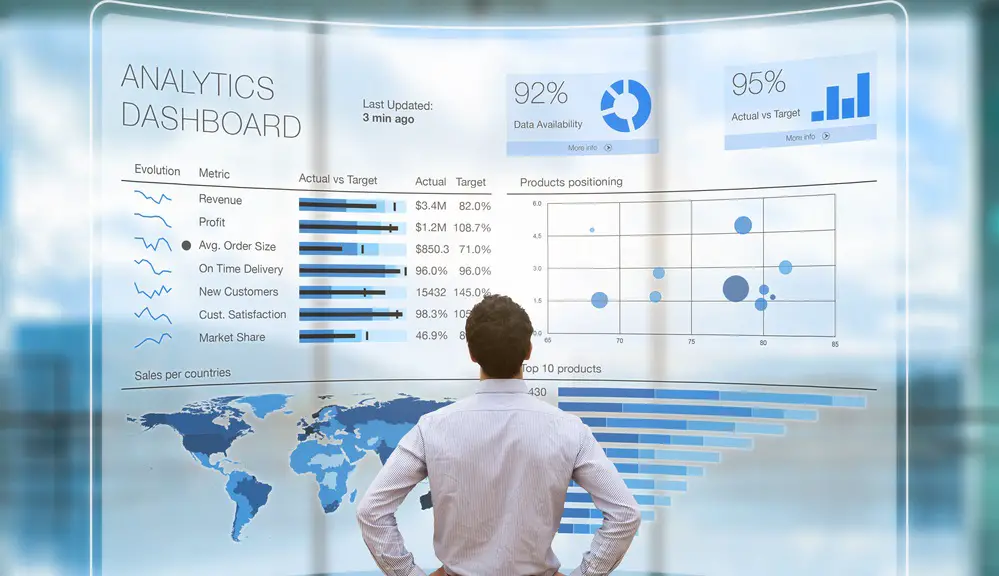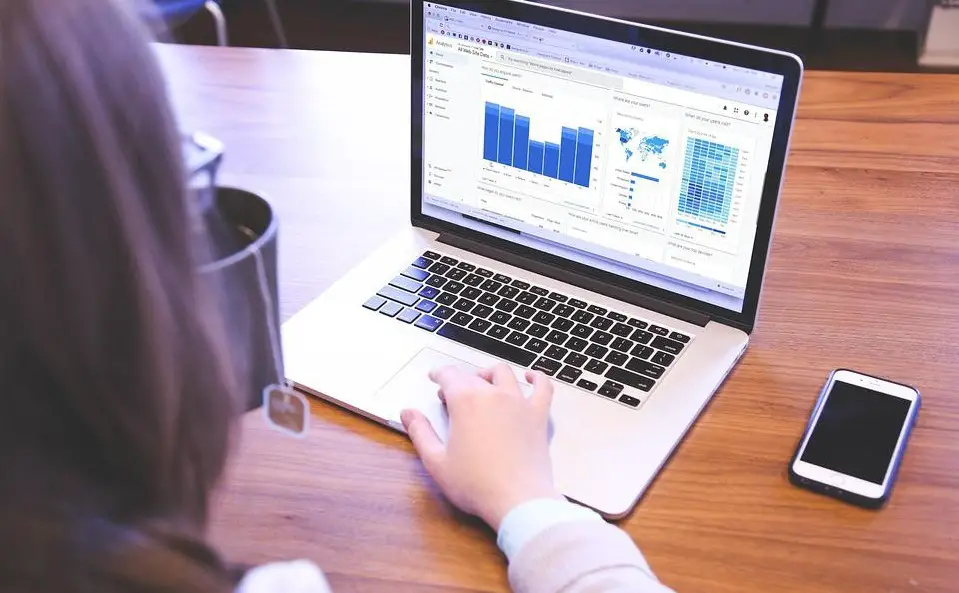Business analytics has a lot to do with collecting big data and finding meaning in that data for businesses to improve future performance and learn.
To make use of this data, learning analytics relies on a few fundamental analytical methods. These include:
- Descriptive analytics
- Predictive analytics
- Diagnostic analytics
- Prescriptive analytics
In business analytics, every one of these analytical methods is used to identify patterns and trends from big data to improve past performances and outcomes. These kinds of informed decisions have led to great success for many high-performing businesses across the globe.
Let’s take a quick look at descriptive analytics. What it means, what it reveals, how it works, and several reasons big business depends on it more and more every day.
Table of Contents
- What Is Descriptive Analytics in Business Intelligence?
- What Can Descriptive Analytics Tell Business Owners?
- How Does Descriptive Analytics Work for Businesses?
What Is Descriptive Analytics in Business Intelligence?

Descriptive analytics is a reliable statistical method used to study historical data to find patterns and meaning. This is the most common form of business data analytics used. By studying historical data, businesses can use descriptive analytics to handle various operational performances throughout the organization.
One of the best ways to describe descriptive analytics is to look at it in action. For example, a certain small business decides to buy advertising on a social media platform that its clients most frequent. The idea is to get the brand in front of as many potential customers as possible. Let’s say the business runs this campaign for three months and then stops.
Descriptive analytics can be used to study:
- How the campaign performed
- Whether the campaign made financial sense
- What went wrong or right?
With this information, the marketing department can either tweak future campaigns on that social media platform or abandon that marketing method altogether.
Descriptive analytics, therefore, is a study of “what happened.”
The other common types of business analytics can be simplified as follows:
- Diagnostic analytics: Why did it happen?
- Predictive analytics: what could happen based on historical data?
- Prescriptive analytics: This takes the other three forms of analytics as an aggregate and attempts to accurately develop an informed way forward (what can be done?)
Descriptive analysis is typically used to produce a host of business metrics and reports that formulate Key Performance Indicators (KPIs), which help businesses not only keep tabs on their performance but also pay close attention to different trends.
Companies can use these descriptive statistics to understand exactly what has happened so far. When combined with the other fundamental types of business analytics, company leaders and managers can develop a data-driven understanding of why things happened the way they did and how to prevent them from happening again.
Related: Data Science vs Business Intelligence
What Can Descriptive Analytics Tell Business Owners?

In the hands of the right business analyst or data analyst, descriptive analytics can tell a business:
- Where has it been?
- Where is it going if current trends hold based on historical data?
- How does it stack up against its closest competition?
However, data science and data analytics can always offer more. Here are some ways descriptive analytics can be of even greater use to business owners and professionals.
Current Performance
Using descriptive analytics, a company can determine which products perform best during specific fiscal year periods. It helps businesses keep a close eye on critical metrics that involve individuals, such as specific sales reps, specific products, teams, and the entire company as a whole.
Historical Trends
Data analysis is all about taking data sets and interpreting them as independent occurrences and occurrences that directly affect the entire picture.
For example, financial managers can look at the statistical data for specific quarters and then use that information to track whether or not the business is growing from quarter to quarter. They can also use this information to see why the business might be shrinking and determine the appropriate course of action.
Business Weak and Strong Points
There are several ways to determine whether or not a company is performing as expected. The first way is to look at the internally set KPIs. Are they being met? If not, why and how can that trend be reversed?
The other method is to look at how the overall industry is performing. Both these studies can be conducted using descriptive analytics and data science. Professionals can use descriptive analytics to study various business metrics such as expenses over revenue, employee-generated income, etc.
You can then compare your specific results with the known industry averages to determine where your business is performing strongly and where it’s weak.
How Does Descriptive Analytics Work for Businesses?
Descriptive analytics depends on two main techniques:
- Data aggregation
- Data mining
The data used in descriptive analytics is first gathered and then intelligently sorted by data aggregation. This gives manageable data sets that data scientists can then study through thorough data analysis.
Data scientists go through data mining processes to develop useful information, which involves searching raw data to identify meaning and patterns. These patterns are then analyzed to find specific ways to be replicated or avoided based on the desired outcomes.
These are the main steps that describe how descriptive analytics works.
Determine Critical Business Metrics
The first thing any data analyst does is identify the key business metrics that need to be tracked. These will depend on what the specific data study needs to achieve.
For example, a business that wants to increase its quarterly revenue will start by identifying marketing strategies that have proven to bring in increased sales.
The accounts receivables department might also offer actionable insights by monitoring metrics that show the disparity between the sale and the actual money collected. This kind of data might shed light on some quarterly disparities between sales and actual income on the books during that quarter.
Data Mining

This is one of the most challenging steps in descriptive analytics. Data mining can be tricky because the necessary data values may be scattered across many files. This is where systems such as Enterprise Resource Planning come into play. These systems often contain the necessary data within their databases.
In some cases, business owners might need to collect data from external sources such as industry benchmarking databases, e-commerce websites, or even social media platforms.
Extraction and Preparation of the Data
This particular process can be time-consuming, considering that it might involve the cleansing of data that could be coming from a host of different external sources. This cleansing process, although tedious, is necessary to eliminate any inconsistencies that might skew the study.
Advanced data analytics employs data modeling, a framework that helps to not only prepare but also arrange and organize company information into an actionable resource.
Data Analysis
Data analysis can be conducted through advanced systems like business intelligence software or your day-to-day Excel spreadsheet. At this point, data analytics makes use of fundamental mathematical operations that can be applied to the variables within the data sets.
For example, a marketing manager might be interested in how much a specific campaign costs and how much new business it brought in during its active period. This kind of ROI study will give indicators that show whether or not the manager should keep pursuing that path.
Data Presentation
Presentation of the data and the findings is the final step. The business analyst in question needs to find ways to present their findings to make them more understandable to the audience.
For example, investors and stakeholders who might not hold business degrees tend to like seeing this kind of data presented in bar charts, line graphs, pie charts, etc. This kind of visible data is easier for most people to grasp.
In the right hands, descriptive analytics is not only easy to do, albeit slightly complex, but it can also be used to answer almost every fundamental question to do with business performance.
Descriptive analytics goes a long way in helping everyone within the company make more-informed and data-based decisions that could improve the overall performance of the entire organization.



